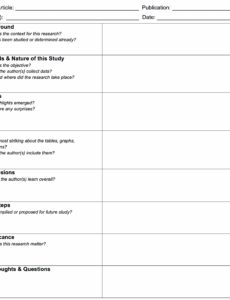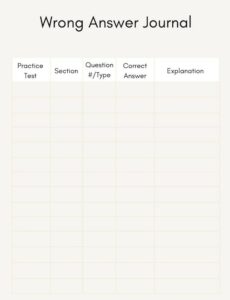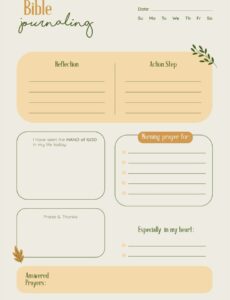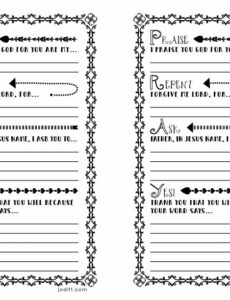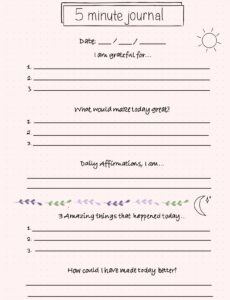Embarking on a journey of personal growth and self-reflection often begins with a single step: putting pen to paper. Journaling has long been celebrated as a powerful tool for clarity, insight, and emotional well-being. It offers a dedicated space to process thoughts, record experiences, and uncover deeper meanings in the everyday moments of life.
However, sometimes the sheer openness of a blank page can feel overwhelming. This is where a structured approach, like the H.E.A.R. method, can be incredibly beneficial. Designed to guide you through a thoughtful process of reflection, it transforms your journaling from a simple record-keeping exercise into a profound spiritual or personal development practice. If you are looking for a systematic way to deepen your understanding and apply insights to your life, an h.e.a.r. journal template might be exactly what you need.
Understanding the H.E.A.R. Method: A Deep Dive
The H.E.A.R. journaling method is a profound and systematic way to engage with texts, whether it’s scripture, an inspiring book, or even your own life experiences. H.E.A.R. is an acronym that stands for Highlight, Explain, Apply, and Respond. Each step builds upon the last, guiding you from simple observation to deep personal transformation. It’s not just about noting down information; it’s about internalizing it and letting it shape your perspective and actions.
The first step, “Highlight,” invites you to identify key verses, phrases, or insights that resonate with you. As you read, pay attention to what stands out, what sparks curiosity, or what feels particularly impactful. Don’t overthink it at this stage; simply mark or write down the parts that catch your attention. This initial selection acts as the foundation for your deeper reflection, ensuring you focus on what truly speaks to you.
Next comes “Explain.” This is where you delve into understanding the context and meaning of the highlighted passage. Ask yourself questions like: What does this mean in its original setting? Are there any unfamiliar words or concepts? What is the author trying to convey? This step encourages you to move beyond a superficial reading and to genuinely grasp the message. Researching background information or cross-referencing can be valuable here, enriching your comprehension.

Following “Explain” is “Apply,” arguably the most crucial step for personal growth. Here, you bridge the gap between understanding and personal relevance. Consider how the insights or truths you’ve uncovered can be applied to your own life. What does this mean for your daily decisions, your relationships, your challenges, or your aspirations? This isn’t just an intellectual exercise; it’s about practical integration. Think about concrete actions you can take or shifts in perspective you can adopt.
Finally, “Respond” brings your reflection to a personal and actionable close. This is your opportunity to articulate your reaction to what you’ve learned and applied. This might take the form of a prayer, a commitment, a personal declaration, or a decision to change. It’s about solidifying your intentions and making a personal vow based on your insights. This step makes your journaling a dynamic conversation, moving beyond mere contemplation to active engagement.
Why a Structured Template Makes a Difference
Utilizing a structured h.e.a.r. journal template offers immense advantages. It provides a clear framework, eliminating the guesswork of where to start or what to focus on. This structure ensures consistency in your reflection practice, making it easier to maintain a habit and track your spiritual or personal development over time. A template acts as a gentle guide, prompting you through each essential phase of the H.E.A.R. method, ensuring no crucial step is overlooked and maximizing the depth of your insights.
- Fosters deeper understanding of chosen texts or experiences.
- Encourages practical application of insights into daily life.
- Promotes consistent personal and spiritual growth.
- Provides a clear record of your journey and transformations.
- Minimizes mental friction, making journaling more accessible.
Crafting Your Own H.E.A.R. Journal Template for Personal Growth
The beauty of a h.e.a.r. journal template lies in its adaptability. While the core framework remains consistent, you have the freedom to customize it to perfectly suit your individual needs and preferences. Whether you prefer a digital document, a printed workbook, or a dedicated section in your physical journal, the goal is to create a space that invites consistent engagement and meaningful reflection. Consider what elements would make your journaling experience most effective and enjoyable for you.
When you set out to create your template, think about the practical layout. Each section Highlight, Explain, Apply, and Respond should have ample space. You might want to include specific guiding questions within each section to kickstart your thoughts, especially when you are just beginning. For example, under “Explain,” you could prompt yourself with “What does this passage mean in its context?” or “Are there any key words to define?” Similarly, for “Apply,” questions like “How does this relate to my current situation?” or “What specific action can I take today?” can be incredibly helpful.
Consistency is key to unlocking the full potential of this method. Integrate your journaling into your daily or weekly routine. Perhaps it’s the first thing you do in the morning, a peaceful break during your lunch, or a reflective activity before bed. The important thing is to create a rhythm that works for you. Don’t be discouraged if you miss a day; simply pick up where you left off. The journey of self-discovery is ongoing, and every step contributes to your growth.
Beyond traditional Bible study, the H.E.A.R. method can be applied to a myriad of contexts. Use it to reflect on a challenging conversation, a memorable experience, a powerful quote, or even a personal goal you’re working towards. Its structured approach helps you extract lessons, understand motivations, and formulate clear responses, making it a versatile tool for any area of life where deeper understanding and intentional action are desired.
- Date and Topic/Passage: Always start with the basics.
- Highlight Section: Space for text or bullet points of key insights.
- Explain Section: Prompted questions for context and meaning.
- Apply Section: Thought-provoking questions for personal relevance and practical steps.
- Respond Section: An area for prayers, commitments, or declarations.
- Additional Notes/Insights: A flexible space for any extra thoughts or revelations.
Embracing a structured journaling approach like the H.E.A.R. method has the power to transform your reflective practices from a sporadic activity into a profound and consistent source of insight. By systematically moving through highlighting, explaining, applying, and responding, you’re not just recording thoughts; you’re actively engaging with them, allowing them to shape your understanding and guide your actions. It’s an invitation to cultivate a deeper relationship with yourself, your beliefs, and the world around you, fostering genuine personal and spiritual development.
Taking the first step with this kind of intentional reflection can unlock new levels of clarity and purpose. As you consistently apply this method, you’ll begin to notice patterns, celebrate growth, and navigate challenges with greater wisdom. The journey of understanding and self-improvement is continuous, and this powerful framework serves as a reliable compass, pointing you towards meaningful discoveries and a more enriched way of living.
